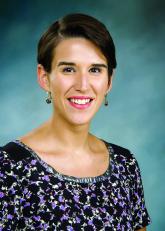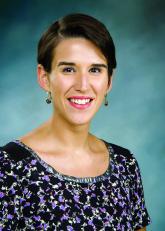Opinion

Diminishing number of clerkship sites poses threat to psychiatry training
- Author:
- Jacqueline Posada, MD
- Patricia E. Ortiz, MD
Psychiatrists in the broader clinical community are positioned to help medical schools expand their clinical sites.
Article

Persistent altered mental status
- Author:
- Manuel A. Cabrera, MD
- Kelsey S. Hobart, MD
- Jacqueline Posada, MD
Mr. O, age 24, presents to the ED weak, sluggish, and incoherent. He has a history of schizophrenia and poor medication adherence. What could be...
Opinion

Revamping mentorship in medicine
- Author:
- Jacqueline Posada, MD
- Anique Forrester, MD
Leaders must determine whether mentorship has been used to protect the status quo or move the culture forward, say Dr. Jacqueline Posada and Dr....
Opinion

Are psychiatrists more prepared for COVID-19 than we think?
- Author:
- Jacqueline Posada, MD
Psychiatrists are on the cutting edge of how to address the pandemic of fear and uncertainty gripping individuals and society across the nation,...
Opinion

CME in the time of COVID-19
- Author:
- Jacqueline Posada, MD
Annual medical conferences usually are a great way to get an infusion of CME credits, brush up on cutting-edge treatments, and review the basics,...
Opinion

Reflections on providing on-call overnight care for psychiatric patients
- Author:
- Jacqueline Posada, MD
Dr. Jacqueline Posada says results from her “emotional pain scale” for residents show the physically and emotionally taxing nature of being on...
Opinion

Personal models of illness
- Author:
- Jacqueline Posada, MD
Dr. Posada shows how cognitive flexibility or reframing can shape the lives of patients and loved ones.
Opinion

The challenges of dating
- Author:
- Jacqueline Posada, MD
Dating during residency is a job unto itself – one that I didn’t expect to balance alongside my long and frequently odd hours of work. To make...
Article

Developing a personal scale for evaluating agitation on inpatient units
- Author:
- Jacqueline Posada, MD
Dr. Jacqueline Posada shares her personal scale for measuring and responding to agitation on the psychiatric inpatient unit.
Article

Navigating the ambiguity around whether to admit or discharge
- Author:
- Jacqueline Posada, MD
In residency training, each patient encounter trains us in the challenging practice of risk assessment in potentially dangerous situations.
